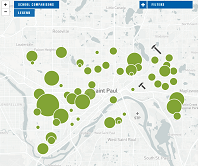-
Major Capital Improvement Projects
-
Last updated: October 2023
All SPPS buildings and sites undergo regular maintenance and improvements to ensure teaching and learning is taking place in safe and healthy schools. A comprehensive list of approved school facility improvement projects is updated annually and available through the SPPS Builds: Five-Year Facilities Maintenance and Capital Implementation Plan (Five Year Plan).
The projects listed on this page are scheduled to undergo major capital improvements--defined as projects budgeted at $2 million or more--as outlined in the Five Year Plan. Others sites will be scheduled at some point in the future as determined by the District's criteria for prioritization. Some sites have already finished their remodeling or significant systems or infrastructure upgrades.
The sites below are categorized by which major developmental stage (see details below the project grid) each project is in: Master Planning, Design, Construction or Complete. For those projects that are in the design process, links are provided below to conceptual diagrams that are refined during the design process as outlined below. These conceptual diagrams were informed through teams from each school with representation from families, students, staff and community members. Conceptual diagrams inform the more robust design phase that accounts for broader and deeper aspects of facility conditions and parameters.
Projects that are noted as complete or in construction have links to their respective project webpages where additional information is available, including monthly project updates--click on the school or building name to get to the project page.
Related information:
Financial information related to capital projects.
Interactive map outlining which schools and other buildings are being prioritized for improvements based on the District's criteria for prioritization.
STATUS OVERVIEW OF PROJECTS BUDGETED AT $2M AND OVER
Click on the building name for more information.
-
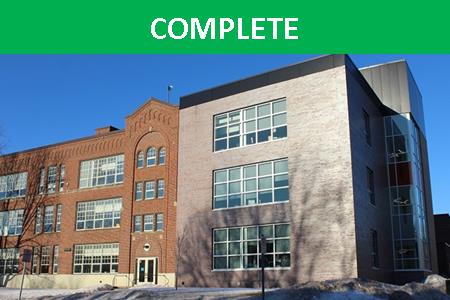
Adams Spanish Immersion
Project type: Addition and remodel
Phase: Construction complete
Cost at completion: $25,153,019
Timeline: Completed summer 2018 -
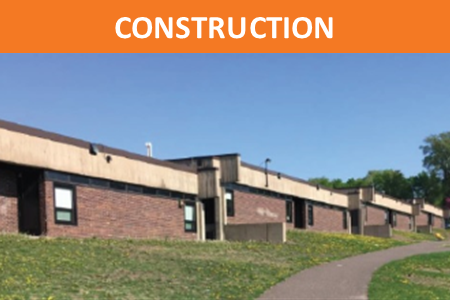
Bruce F. Vento Elementary
Project type: New construction
Phase: Construction
Project budget: $89,900,000
Timeline: Fall 2023-fall 2025 -
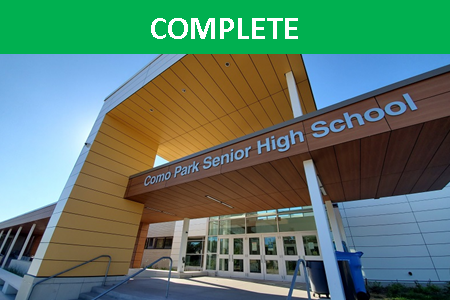
Como Park Senior High School
Project type: Addition, remodel, athletic improvements
Phase: Construction complete
Project budget: $51,330,000
Timeline: Completed winter 2020 -
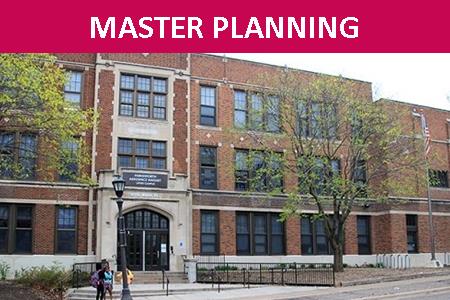
Farnsworth Aerospace - Upper Campus
Project type: Major infrastructure improvements
Phase: Master Planning
Project budget: TBD
Timeline: FY2023-26 -

Global Arts Plus - Lower Campus
Project type: Addition and remodel
Phase: Construction complete
Cost at completion: $22,738,472
Timeline: Completed fall 2018 -
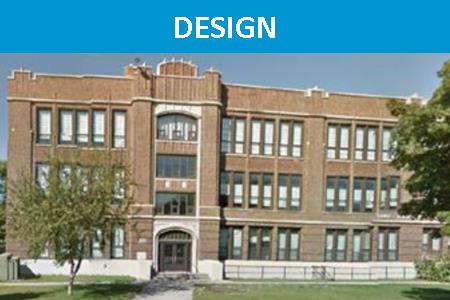
Hidden River Middle School
Project type: Major renovation
Phase: Design
Project budget: $54,200,000
Timeline: Summer 2024 to fall 2025 -
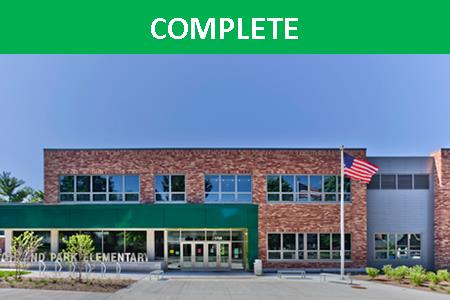
Highland Park Elementary
Project type: Addition and remodel
Phase: Construction complete
Cost at completion*: $24,754,427
Timeline: Completed summer 2018 -
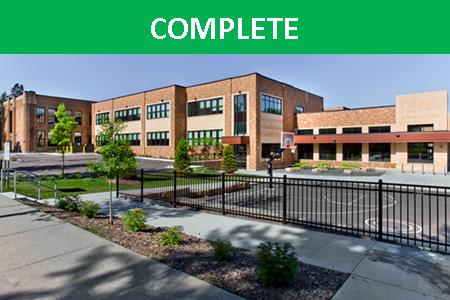
Horace Mann School
Project type: Addition and remodel
Phase: Construction complete
Cost at completion: $19,415,153
Timeline: Completed fall 2018 -
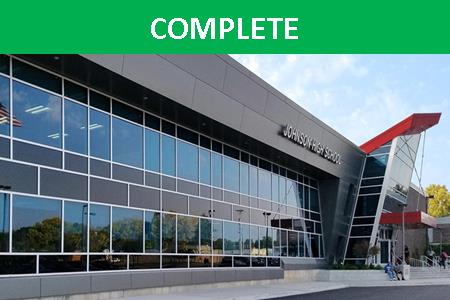
Johnson Senior High School
Project type: Building systems and HVAC improvements
Phase: Construction complete
Project budget: $16,500,000
Timeline: Spring 2021-fall 2023 -
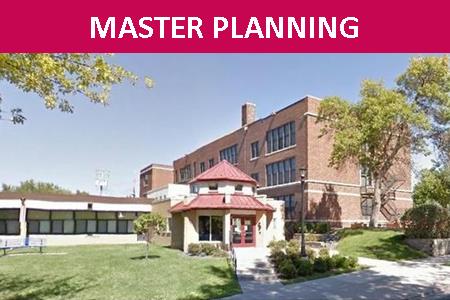
The Heights
Project type: Major infrastructure improvements
Phase: Master Planning
Project budget: TBD
Timeline: FY2025-27 -
Systems and Infrastructure Programs
NOTE: Click the “Systems and Infrastructure Programs” title above to view progress reports for projects such as window replacements, roof replacements, HVAC replacements, fire alarm/fire safety replacements, and instructional audio visual installation.
-
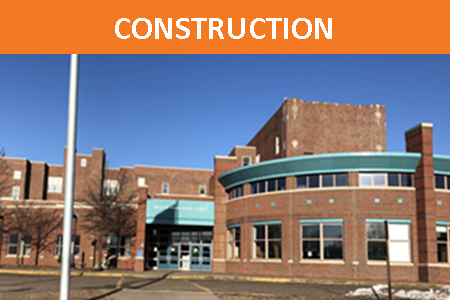
American Indian Magnet
Project type: Addition and remodel
Phase: Construction
Project budget: $53,300,000
Timeline: Summer 2020-fall 2024 -
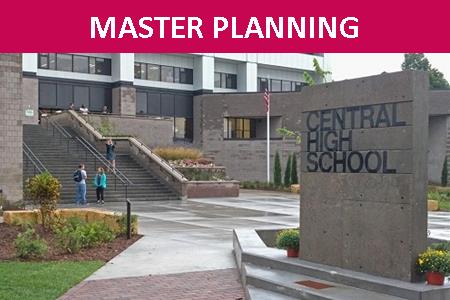
Central High School
Project type: Window and lintel replacement
Phase: Master Planning
Project budget: TBD
Timeline: FY2023-24 -
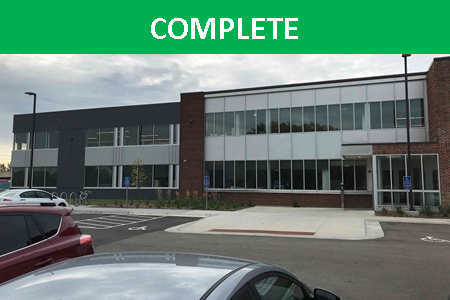
Education and Operations Services
Project type: Addition and remodel
Phase: Construction complete
Project budget: $17,120,000
Timeline: Completed fall 2021 -
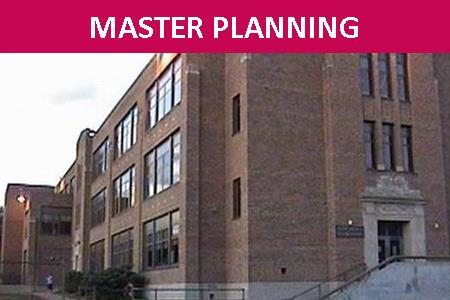
Farnsworth Aerospace - Lower Campus
Project type: Major renovation
Phase: Master Planning
Project budget: TBD
Timeline: FY2025-28 -
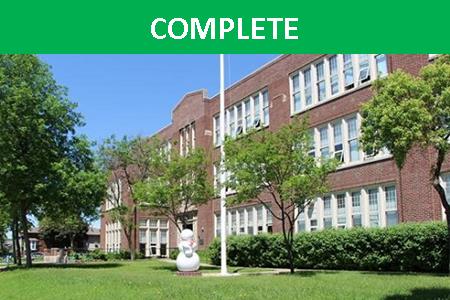
Global Arts Plus - Upper Campus
Project type: Remodel
Phase: Construction complete
Cost at completion*: $23,266,670
Timeline: Completed fall 2018 -
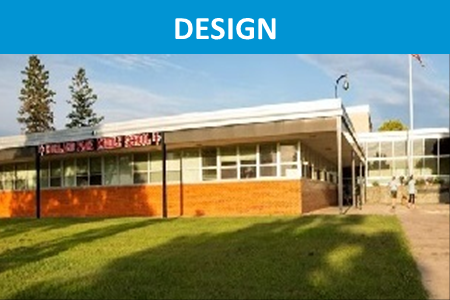
Highland Park Middle School
Project type: Addition and renovation
Phase: Design
Project budget: $49,500,000
Timeline: Spring 2024 to fall 2025 -
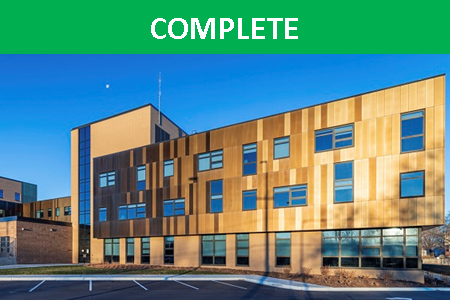
Humboldt High School
Project type: Addition and remodel
Phase: Complete
Project budget: $48,000,000
Timeline: Completed fall 2021 -
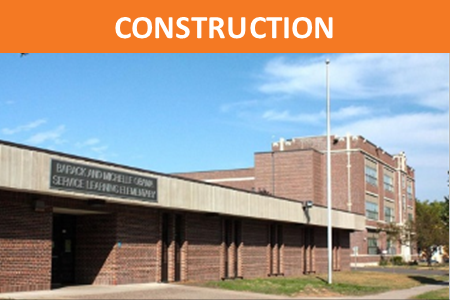
Obama School (Barack and Michelle Obama)
Project type: Major renovation
Phase: Construction
Project budget: $72,300,000
Timeline: Summer 2023 to fall 2025 -
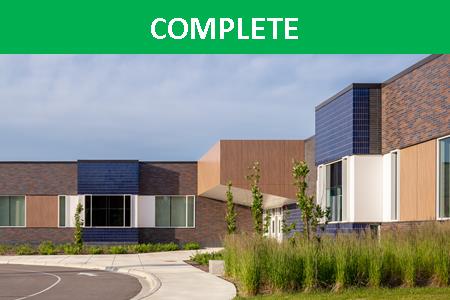
RiverEast Elementary and Secondary
Project type: Relocation and new building
Phase: Construction complete
Cost at completion: $25,876,615
Timeline: Completed fall 2018 -
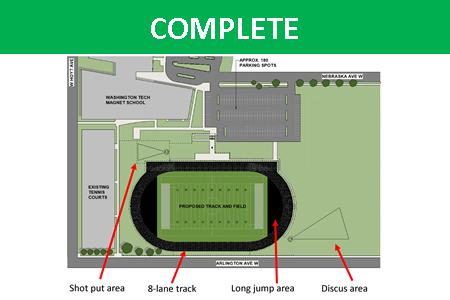
Washington Technology Magnet
Project type: Athletic improvements
Phase: Complete
Project budget: $4,669,000
Timeline: Completed spring 2022
-
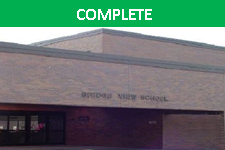
Bridge View School
Project type: Roof replacement
Phase: Closeout/complete
Project budget: $5,000,000
Timeline: FY2022-23
(Note: Master Planning also underway for major renovation for FY2027-30) -
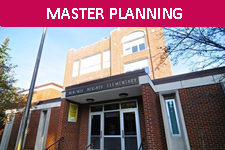
Cherokee Heights Elementary
Project type: Major infrastructure
Phase: Master Planning
Project budget: TBD
Timeline: FY2023-27 -
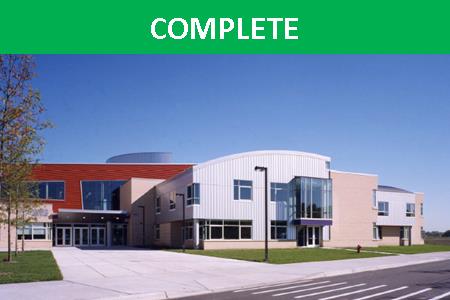
E-STEM Middle School
Project type: Remodel
Phase: Construction complete
Cost at completion: $18,677,984
Timeline: Completed 2019 -
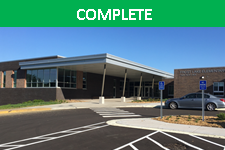
Frost Lake Elementary
Project type: Addition and remodel
Phase: Construction
Project budget: $36,000,000
Timeline: Summer 2020-fall 2022 -
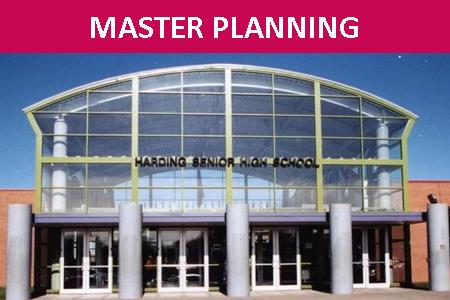
Harding High School
Project type: Roof replacement
Phase: Master Planning
Project budget: TBD
Timeline: FY2025-26 -
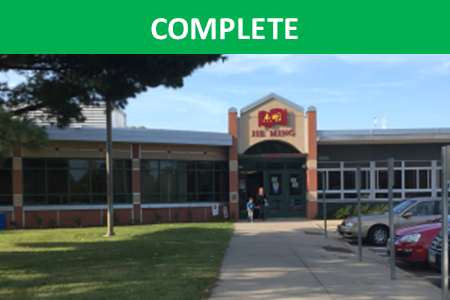
Jie Ming Mandarin Immersion Academy
Project type: Addition and systems upgrades/replacements
Phase: Complete
Project budget: $26,840,000
Timeline: FY2021-23 -
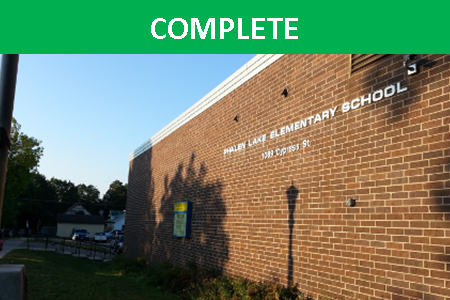
Phalen Lake
Project type: Building systems upgrade
Phase: Complete
Project budget: $7,175,000
Timeline: Completed fall 2021 -
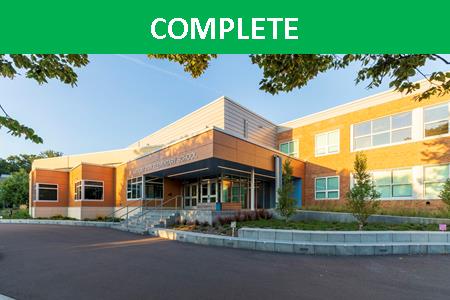
St. Anthony Park Elementary
Project type: Addition and remodel
Phase: Construction complete
Cost at completion: $21,372,742
Timeline: Completed summer 2018 -
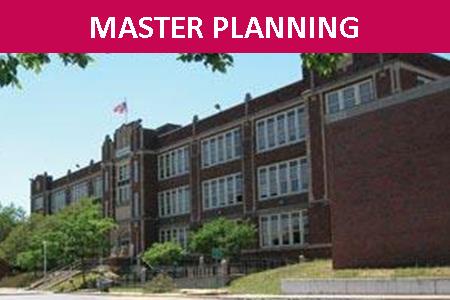
Wellstone Elementary
Project type: Major infrastructure improvements
Phase: Master Planning
Project budget: TBD
Timeline: FY2023-27
-
*Open issues being resolved; final amount may change.
Each project undergoes a rigorous development process from concept to completion as outlined here:
1. Master Planning (MP)/ 5 Year Plan: In the MP phase, stakeholder engagement takes place to determine the overarching vision to inform the project development process. This process informs the development of the project charter that outlines the existing use of a building’s spaces, current building conditions, and high priority needs for improvement. The project charter is a product of internal pre-design work for projects estimated to be over two million dollars and defines the proposed scope of construction based on the evaluation of building conditions, programmatic need, and initial stakeholder engagement. The proposed timeline and rough order of magnitude cost estimate are also included.
2. Design: The District hires architects and engineers to further define and develop designs for the project. Project design involves a multi-step process as outlined below:
- Predesign (PD): In the PD phase, the architect seeks input from site and District stakeholders on the needs of the project such as the number of required classrooms, core and specialized spaces, offices, along with other features, while developing a space program and conceptual design plan. Engineers investigate building infrastructure needs and determine the construction scope to address the needs. Needs and wishes are weighed against the cost estimate, and eventually the budget, to determine the feasibility of the scope of work.
- Schematic Design (SD) and Design Development (DD): In the SD phase, the architect prepares a series of drawings that show the general arrangement and size of learning spaces and other areas such as the cafeteria, gym, offices, lockers, etc. Models or renderings are often produced at this stage to help visualize the project. At the DD phase, the architect provides more detailed drawings to show other more in-depth aspects of the proposed design that is coordinated with structural, mechanical, and electrical systems. Floor plans show all the areas and rooms in their actual shapes and sizes.
- Construction Documents (CDs) describe what needs to be constructed and assembled to build the project. Specifications are developed for the needed materials and room finishes. CDs usually include architectural and engineering drawings, specifications, site information (surveys, soil borings, existing conditions), and other information dictating the contractor’s obligations such as the District’s bidding requirements and agreement forms.
3. Bidding: CDs are issued at the procurement stage and contractors submit a bid proposal to the District to build the project. The procurement stage may include clarifications or changes to CDs in response to bidder questions. The design team and owner review bid results for fit with budget, the bid results refine the project construction cost
4. Construction: Once a project has been awarded to a construction contractor, oversight needs to be provided to ensure the design is fully realized in accordance to the plans and specifications. For SPPS, the oversight during the construction phase is conducted by SPPS Facilities Department staff who work closely with architects and construction managers through site visits to oversee the construction progress and respond to both the contractor’s and the school’s needs during the construction process.
5. Closeout: The project closeout period begins at substantial completion of construction. The Substantial Completion certificates indicate beneficial occupancy and shift of focus to completion and inspection of punch list items and entry into warranty period. There are still outstanding financial obligations during the closeout phase of the project, but an initial evaluation of the overall use of budget can be conducted. Final fiscal closeout occurs when all contractual obligations are complete and all final payments have been issued. For the larger more complex projects this can occur twelve to eighteen months after completion of construction.
6. Completion: Once the closeout phase is complete, the construction project is officially considered complete. However, a site may once again be considered for improvements in subsequent years if: The original improvements did not encompass all identified potential improvements due to limitations in funding; certain identified needs for improvements did not meet the threshold for Criteria for Prioritization; or if new needed improvements are identified due to the natural process of aging. Note: For those sites designated as being COMPLETE, some closeout processes may still be in place and final project costs (fiscal closeout) may still need to be tallied, but to the school community, the remodeling is for all practical purposes complete.
- Predesign (PD): In the PD phase, the architect seeks input from site and District stakeholders on the needs of the project such as the number of required classrooms, core and specialized spaces, offices, along with other features, while developing a space program and conceptual design plan. Engineers investigate building infrastructure needs and determine the construction scope to address the needs. Needs and wishes are weighed against the cost estimate, and eventually the budget, to determine the feasibility of the scope of work.


